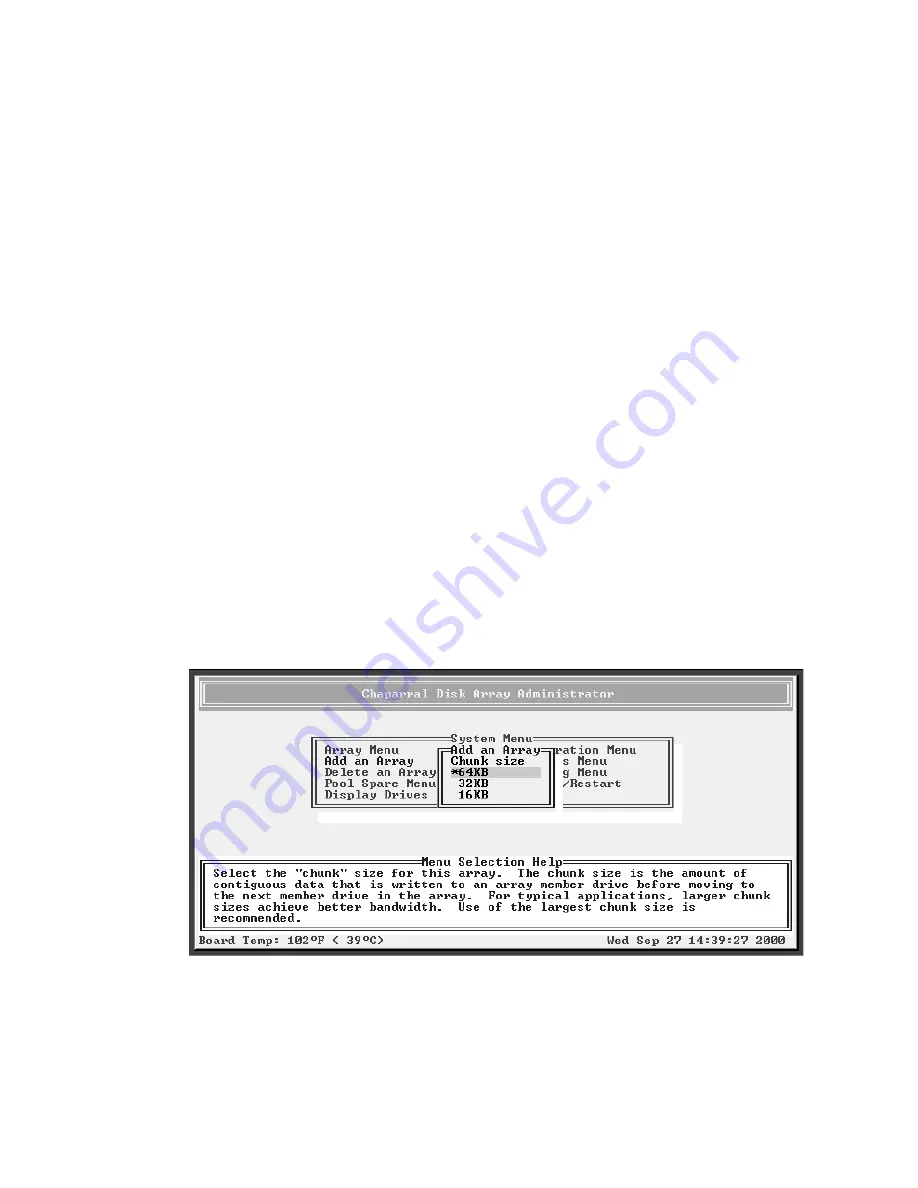
G- and K-Series User’s Guide
4-6
7
If the Number of Spares screen displays, enter the number of spares you want to
add and press
Enter
.
This creates dedicated spares that can only be used by this array. A dedicated
spare drive will not be available for any other use. For more information about
spares, see Chapter 6,
Managing Spares
.
If you do not want a spare, enter 0.
The Select Drives screen displays.
8
If the Select Drives screens displays, select the drive you want to use as a
dedicated spare and press
Enter
.
Only available drives, that is, drives that are not members of an array and are
not assigned as a dedicated or pool spares, display. You can delete a dedicated
spare from the array at any time. For more information see,
Deleting a
Dedicated Spare
on page 6-3.
You select a drive by highlighting it and pressing
Enter
. Each selected drive
turns gray in the drive list. After you press
Enter
for the number of drives you
entered previously, the system automatically goes to the next screen. To skip a
drive, use the
↑
or
↓
keys.
If the array you are creating is a RAID 3, RAID 4, RAID 5, or RAID 50, the
Chunk Size screen displays.
9
If the Chunk Size screen displays, select the chunk size and press
Enter
.
The chunk size is the amount of contiguous data that is written to an array
member before moving to the next member of the array. To determine the
Summary of Contents for G5312
Page 1: ...G and K Series External RAID Board Controller G5312 G7313 K5312 K7313 User s Guide...
Page 2: ......
Page 10: ...G and K Series User s Guide viii...
Page 24: ...G and K Series User s Guide 1 14...
Page 28: ...G and K Series User s Guide 2 4...
Page 33: ...Accessing the Disk Array Administrator Software 3 5 Figure 3 1 Menu tree...
Page 34: ...G and K Series User s Guide 3 6 Figure 3 2 Menu tree continued...
Page 80: ...G and K Series User s Guide 6 8...
Page 138: ...G and K Series User s Guide 9 14...
Page 150: ...G and K Series User s Guide G 6...
Page 159: ......






























